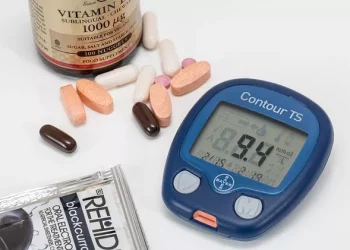Blood sugar monitoring is an essential tool in managing diabetes, helping individuals and healthcare providers track how well blood glucose levels are being controlled. Among the different methods of measuring blood glucose, random blood sugar testing plays a significant role in both diagnosing and managing diabetes. However, many people are uncertain about what constitutes a normal or abnormal random blood sugar level and when it becomes a cause for concern. In this article, we will delve into the concept of random blood sugar, the factors influencing its limits, and the implications of abnormal readings in diabetes management.
What Is Random Blood Sugar?
Random blood sugar (RBS) refers to a blood glucose test taken at any time of the day, regardless of when the individual last ate. This type of test is useful for assessing how the body is processing glucose in real-time, providing immediate insights into current blood sugar levels. Unlike fasting blood sugar tests, which measure glucose after at least eight hours of fasting, random blood sugar can be tested anytime and is often used in emergency situations or routine check-ups to monitor glucose fluctuations.
RBS tests are typically done by drawing a small sample of blood, usually from a finger prick or a vein, and testing it for glucose content. Results from random blood sugar tests can be impacted by various factors, including food intake, physical activity, medications, stress, and the time of day. These factors make RBS an important but less controlled measure compared to fasting blood sugar tests, which are more standardized.
The Normal Range of Random Blood Sugar
In understanding the limits of random blood sugar, it is essential to recognize the difference between what is considered a normal and abnormal reading. Generally, the reference range for random blood sugar is the following:
Normal Range: A random blood sugar level under 140 mg/dL (7.8 mmol/L) is typically considered normal for a person without diabetes.
Pre-diabetes or Impaired Glucose Tolerance: A random blood sugar level ranging from 140 to 199 mg/dL (7.8 to 11.0 mmol/L) can indicate pre-diabetes or impaired glucose tolerance, which is a risk factor for developing Type 2 diabetes.
Diabetes: A random blood sugar level of 200 mg/dL (11.1 mmol/L) or higher suggests diabetes, especially if the individual is also showing symptoms of hyperglycemia (excessive thirst, frequent urination, unexplained weight loss).
It is important to note that these values are general guidelines and can vary slightly depending on the specific guidelines followed by healthcare professionals and the patient’s individual circumstances.
Factors That Affect Random Blood Sugar Levels
Several factors can influence random blood sugar levels, making it essential to consider the context of the test when interpreting the results. Understanding these factors can help individuals with diabetes make better decisions about when and how often to check their blood sugar levels.
1. Food Intake
The amount and type of food consumed before taking a random blood sugar test play a crucial role in determining the glucose level in the bloodstream. Carbohydrates, especially simple sugars, are broken down into glucose, causing a spike in blood sugar levels. A large meal high in carbs will naturally result in higher blood sugar readings, which could potentially be outside the normal range.
Postprandial Blood Sugar (After Eating): After eating a meal, it is common for blood sugar levels to rise. In a person without diabetes, the body’s insulin response will typically lower blood sugar back to normal levels within a few hours. However, for individuals with diabetes or pre-diabetes, this process may be impaired, resulting in higher-than-normal blood sugar levels.
2. Physical Activity
Exercise has a profound effect on blood sugar levels. During physical activity, muscles utilize glucose for energy, which can lead to a temporary decrease in blood sugar. Depending on the intensity and duration of the exercise, this effect can be significant enough to bring a high random blood sugar reading back within a normal range.
Exercise and Blood Sugar: For people with diabetes, understanding how exercise affects their blood sugar is essential. Intense or prolonged activity can lead to hypoglycemia (low blood sugar) if insulin or oral medications are not adjusted accordingly. On the other hand, sedentary individuals or those with uncontrolled diabetes may see elevated blood sugar levels even with moderate activity.
3. Medications
Many medications, particularly those used to treat diabetes, can influence blood sugar levels. Insulin and oral medications like metformin, sulfonylureas, and GLP-1 agonists work by helping the body use glucose more effectively or by reducing the amount of glucose produced by the liver.
Insulin and Medications: While insulin helps lower blood sugar, some oral medications may cause an increase in glucose levels. If someone is on insulin therapy or taking medications that impact blood glucose regulation, it is essential to monitor blood sugar regularly, including through random blood sugar tests, to ensure that glucose levels remain within the desired range.
4. Stress
Physical or emotional stress can trigger the release of stress hormones like cortisol and adrenaline, which can increase blood sugar levels. This phenomenon, known as the “stress response,” can result in higher random blood sugar levels, even if the individual is not eating or engaging in physical activity.
Stress-Induced Hyperglycemia: People with diabetes, especially those whose blood sugar is not well-controlled, may experience significant fluctuations in glucose levels during periods of stress. It is important to account for stress when interpreting blood sugar readings.
5. Illness or Infection
When the body is fighting an illness or infection, stress hormones and inflammatory cytokines can raise blood glucose levels. This is particularly important for diabetics, as infections can lead to significantly elevated blood sugar readings, sometimes making it difficult to manage glucose levels.
Infection and Blood Sugar: People with diabetes are more susceptible to infections, and blood sugar levels can increase as the body responds to illness. During such times, blood sugar monitoring should be more frequent to manage potential spikes in glucose levels and avoid complications.
Why Random Blood Sugar Limits Are Important in Diagnosis
Random blood sugar tests are one of the tools used to diagnose diabetes and pre-diabetes. When a person exhibits symptoms of diabetes (such as frequent urination, excessive thirst, fatigue, and unexplained weight loss), a random blood sugar test may be performed to confirm or rule out the presence of diabetes.
In addition to helping diagnose diabetes, random blood sugar limits also play a key role in identifying individuals at risk for developing the disease. Those with random blood sugar levels in the pre-diabetic range may benefit from lifestyle changes such as weight loss, dietary modifications, and increased physical activity to prevent the onset of Type 2 diabetes.
What Happens When Random Blood Sugar Is Outside the Normal Range?
When random blood sugar levels fall outside the normal range, it may be indicative of diabetes or other glucose regulation issues. Here’s a breakdown of what these readings can mean:
1. Blood Sugar Greater than 140 mg/dL but Less than 200 mg/dL (Pre-diabetes)
A random blood sugar level between 140 mg/dL and 199 mg/dL suggests impaired glucose tolerance, also known as pre-diabetes. This condition does not qualify as diabetes, but it puts individuals at an increased risk of developing Type 2 diabetes within five to ten years if lifestyle changes are not made.
What You Can Do: Individuals with pre-diabetes can take proactive measures to delay or prevent the onset of Type 2 diabetes. This may include improving their diet, increasing physical activity, managing stress, and losing weight.
2. Blood Sugar Greater than 200 mg/dL (Diabetes)
A random blood sugar level of 200 mg/dL or higher indicates diabetes, especially if the individual is showing symptoms of high blood sugar (polyuria, polydipsia, and unexplained weight loss). This diagnosis may be confirmed with additional tests, such as a fasting blood sugar test or an oral glucose tolerance test.
What You Can Do: A diagnosis of diabetes requires immediate attention and a comprehensive treatment plan. This often includes dietary changes, regular exercise, blood sugar monitoring, and possibly medications or insulin therapy. Proper management is key to preventing complications such as neuropathy, kidney disease, and heart disease.
The Importance of Regular Blood Sugar Monitoring
While random blood sugar tests provide important information about a person’s glucose levels at a given moment, they are only part of the overall picture. Regular blood sugar monitoring, including fasting glucose tests, postprandial tests, and hemoglobin A1c (HbA1c) measurements, are critical for long-term diabetes management.
Comprehensive Diabetes Monitoring: HbA1c levels give a picture of average blood sugar control over the past two to three months. Fasting blood sugar tests help assess how well the body handles glucose after a period of fasting, while random blood sugar tests give an immediate snapshot of glucose levels at any time during the day. By combining all of these tests, healthcare providers can create an individualized treatment plan for each patient.
Conclusion
Understanding the limits of random blood sugar and its role in diagnosing and managing diabetes is vital for both patients and healthcare providers. Random blood sugar levels that are consistently above 140 mg/dL may indicate a risk for diabetes or already present diabetes. For individuals with diabetes, regular blood sugar monitoring is essential to maintaining good control and preventing complications. While a random blood sugar test provides useful information, it should be considered alongside other tests for a more complete picture of an individual’s glucose control.
Early detection and appropriate management of blood sugar levels can significantly reduce the risk of developing serious health complications. Therefore, it is crucial to work closely with healthcare professionals to monitor and manage blood sugar, especially if you are at risk for or already have diabetes. By maintaining blood sugar levels within a healthy range, individuals can lead a healthier life and prevent the long-term effects of uncontrolled diabetes.
Related topics:
What Should Your Blood Glucose Level Be for Diabetes?
























